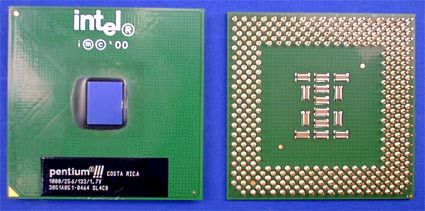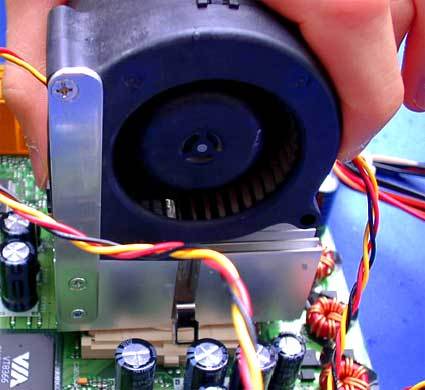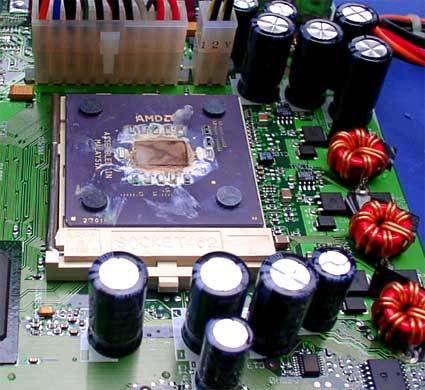Hot Spot: How Modern Processors Cope With Heat Emergencies
Intel Pentium III 1 GHz - System Hang / CPU Alive
Our next candidate is Intel's Pentium III processor. A few seconds after the heat sink was removed the system hangs. However, once you replace the heat sink and reboot the system, Pentium III will greet you healthily up and running. Intel's older processor is also equipped with a thermal diode and a thermal monitoring unit. This unit is not as advanced as what we find in Pentium 4, but it ensures that Pentium III stops operating as soon as a certain trigger temperature has been reached. Your system may hang and you might lose data, but the hardware of your system does not take any damage. Intel has been equipping its processors with this simpler thermal protection for more than two years.
AMD Athlon 1.4 GHz (Thunderbird) - System Crash / Death Of Processor
Test-CPU number three is AMD's Athlon 1400 processor, which comes equipped with the 'Thunderbird' core that was introduced in June 2000.
The removal of the heat sink proves to be fatal. In less than a second Athlon 1400 dies the heat death. It doesn't take long and the core reaches a temperature of extremely hefty 370 degrees Celsius / 698 degrees Fahrenheit. If the user of the Athlon system doesn't turn off his box immediately, the motherboard will be destroyed too. There's even the risk of a fire.
AMD did not bless the Thunderbird core with ANY thermal protection whatsoever. If the heat sink should come off, the owner is facing a significant financial loss. He requires a new processor and possibly a new motherboard too. Athlon (Thunderbird) owners should make sure that the processor heat sink in their system is fixed 100% safely. The fact that the vast majority of heat sinks is only fixed to the little notches of SocketA doesn't help. We have seen several occasions when those notches finally broke under the weight of the heat sink.
Get Tom's Hardware's best news and in-depth reviews, straight to your inbox.
Current page: Intel Pentium III 1 GHz - System Hang / CPU Alive
Prev Page Intel Pentium 4 2 GHz - System Slowdown Next Page AthlonmP 1.2 GHz (Palomino) - System Crash / Thermal Diode Fails / CPU Dead


